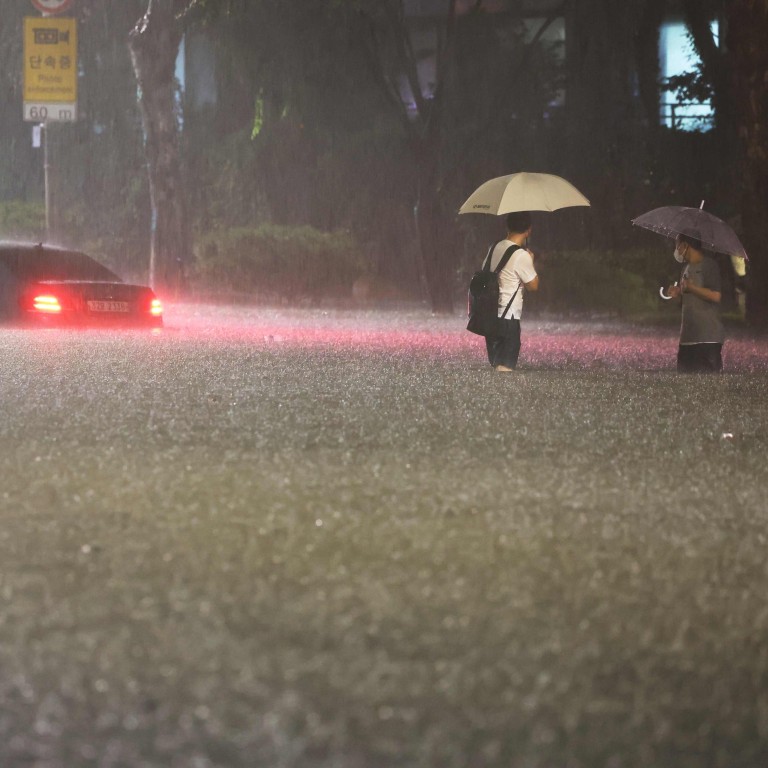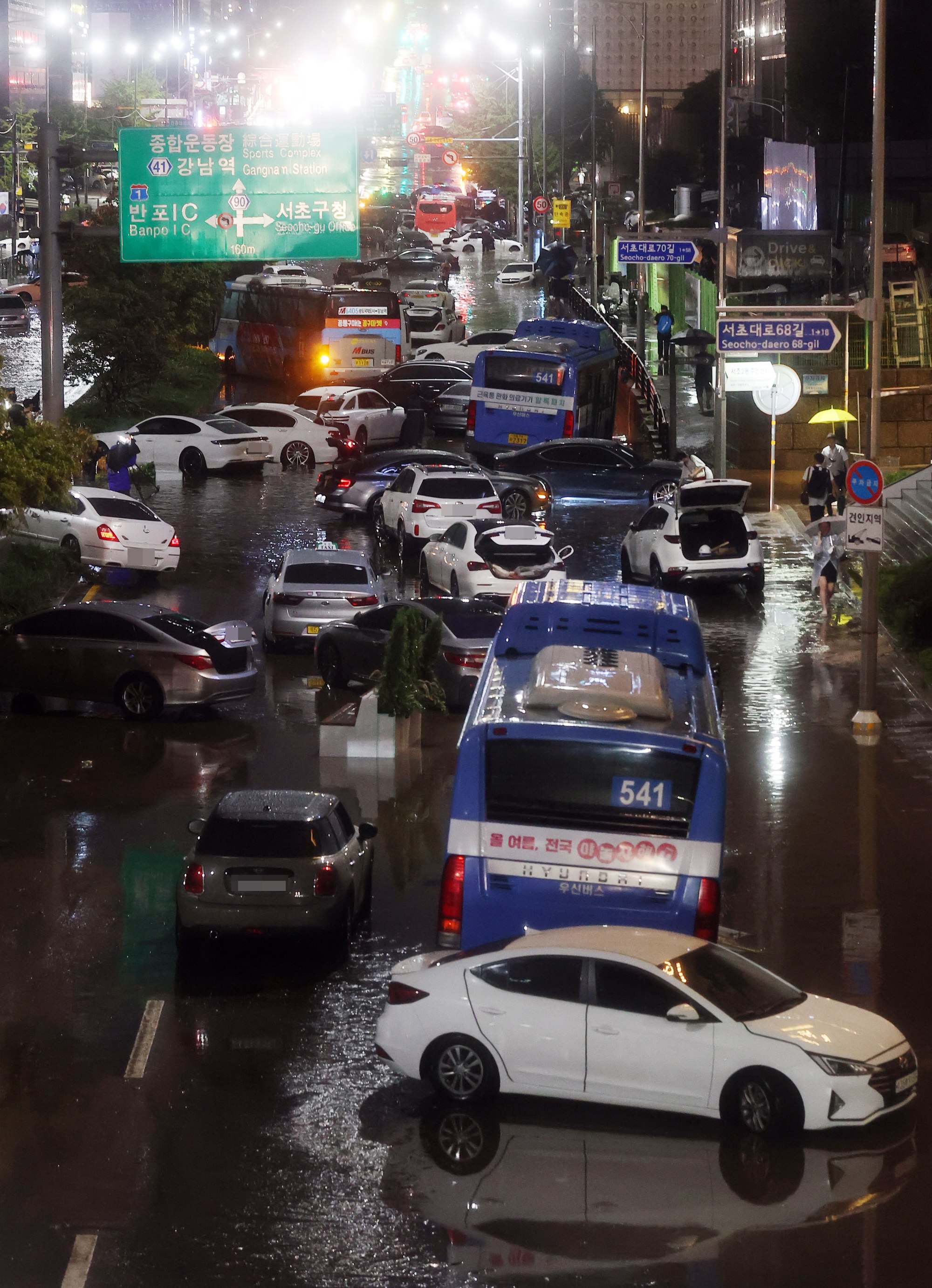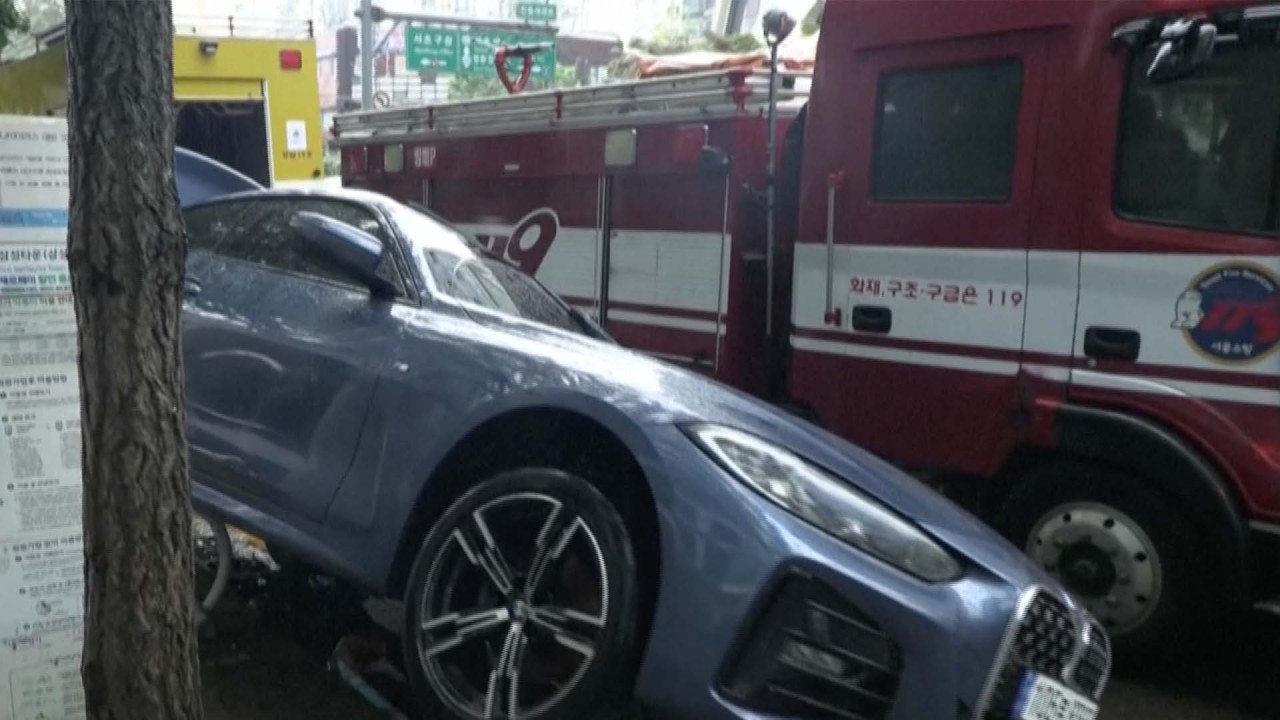
At least 8 die in South Korea as record rain swamps Seoul
- Some parts of the South Korean capital received more than 140mm of rain overnight – the most in 80 years, according to local meteorologists
- Three of the victims drowned in a basement home in southern Seoul. Another stepped into electrified waters and one person was crushed by a bus stop
The southern part of Seoul received more than 100mm (3.9 inches) of rain per hour late on Monday, with some parts of the city receiving 141.5mm of rain, the worst rainfall in 80 years, according to local media citing the Korea Meteorological Administration (KMA). Another 300-350mm of rain is forecast to fall through Thursday, the KMA said, adding to the risks of more flooding.
Dramatic images shared on social media showed people wading through waist-deep water, subway stations overflowing, and cars half-submerged in Seoul’s glitzy Gangnam district after torrential rain battered the city.

President Yoon Suk-yeol on Tuesday visited a semi-basement apartment where three family members had died the night before after swift moving floodwaters filled the space.
The dangers of such underground flats, called banjiha, were famously depicted in a flooding scene in the 2020 Oscar-winning film Parasite.
Yoon told the area’s residents he would try to ensure their lives returned to normal as quickly as possible, and he instructed officials to look at measures to better ensure housing safety, according to a statement from his office.
At least five people had died in Seoul and three others in the neighbouring Gyeonggi province by early Tuesday, the Central Disaster and Safety Countermeasures Headquarters said.
Four, including the three family members, had died after being drowned in flooded buildings, one was believed to have been electrocuted, another person was found under the wreckage of a bus stop, and the others two died in a landslide, it said.
At least nine people were injured, while seven were missing.
Some buildings and stores in Gangnam district were flooded and were without power, while cars, buses and subway stations were submerged, leaving people stranded.
Lim Na-kyung, a 31-year-old office worker, recounted her fears of Monday evening, saying the situation reminded her of a scene from the 1997 film Titanic.
“I had to keep going higher and higher because the building was submerging at a fast pace … I couldn’t believe that I was trapped in building with 40 other people in the middle of Gangnam district,” said the mother of two, who eventually had to spend the night at a Pilates centre on the fourth floor.
Some 163 people lost their homes and 751 buildings were flooded, the Ministry of the Interior and Safety said, adding that at least 11 ministries were involved in the government’s response to minimise the damage.
The Central Disaster and Safety Countermeasures raised the crisis alert to the highest and requested organisations adjust their working hours.

The KMA issued heavy rain warnings across the capital and the metropolitan area of 26 million as well parts of Gangwon and Chungcheong province.
The KMA expects heavy rainfall for the central part of the country to continue through at least Wednesday.
While South Korea often experiences heavy rains in summer, “such sharp increase in precipitation and frequent torrential rains cannot be explained without the big trend of climate change,” said a KMA official, who spoke in condition of anonymity. “This phenomenon is seen occurring more often due to climate change that has resulted in a prolonged summer.”
South Korea’s Yoon at risk of being a ‘lame duck’ amid gaffes, controversies
The hourly rainfall totals were the highest since a storm in 1942, Yonhap News Agency reported.
Commuters were slowly returning to work on Tuesday morning after emergency crews worked overnight to clean up much of the mess. But there were concerns about further damage as torrential rain was forecast for the second day in a row.
While most of the Seoul metropolitan area’s subway services were back to normal operations, around 80 roads and dozens of riverside car parks remained closed because of safety concerns.
Additional reporting by Bloomberg, Associated Press, Agence France-Presse


